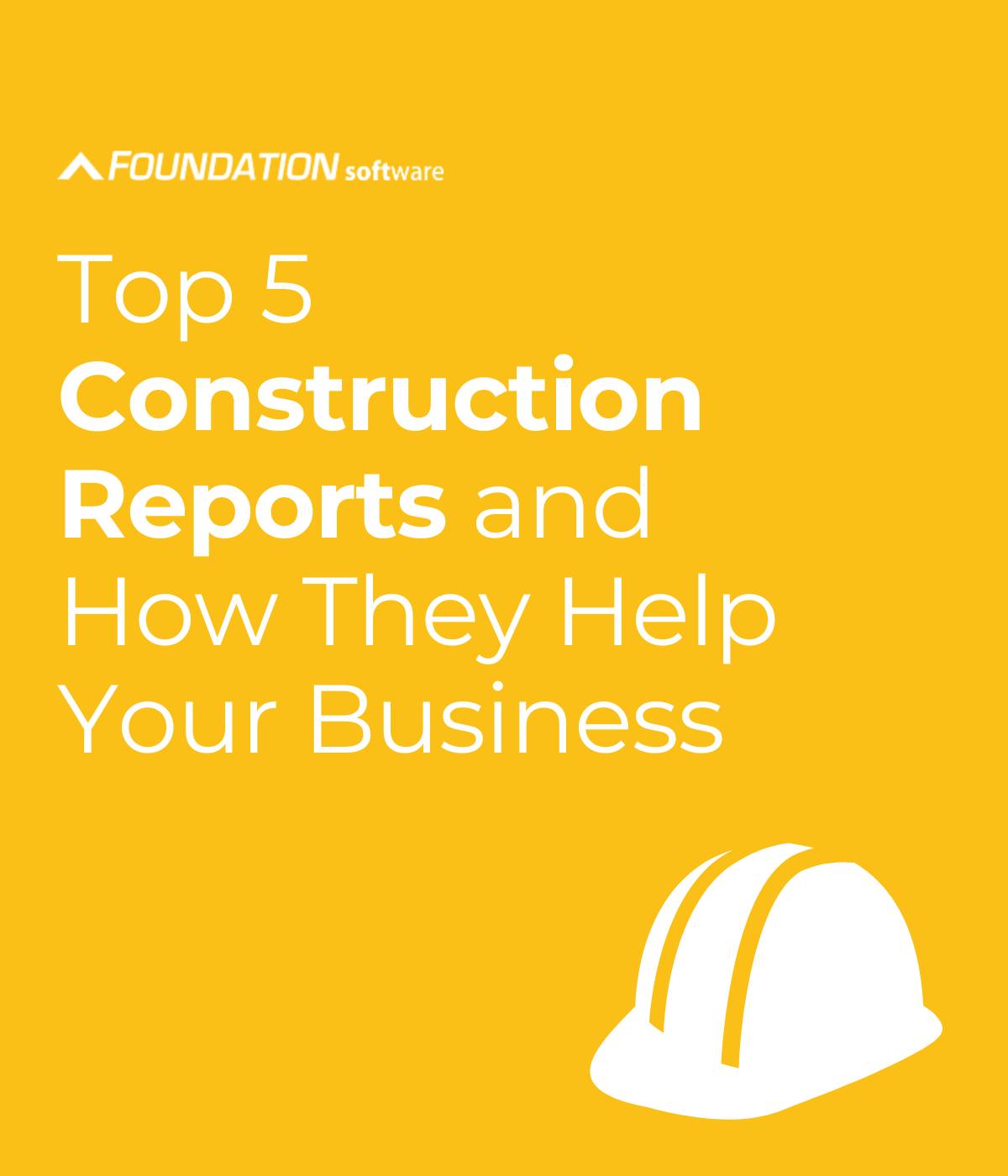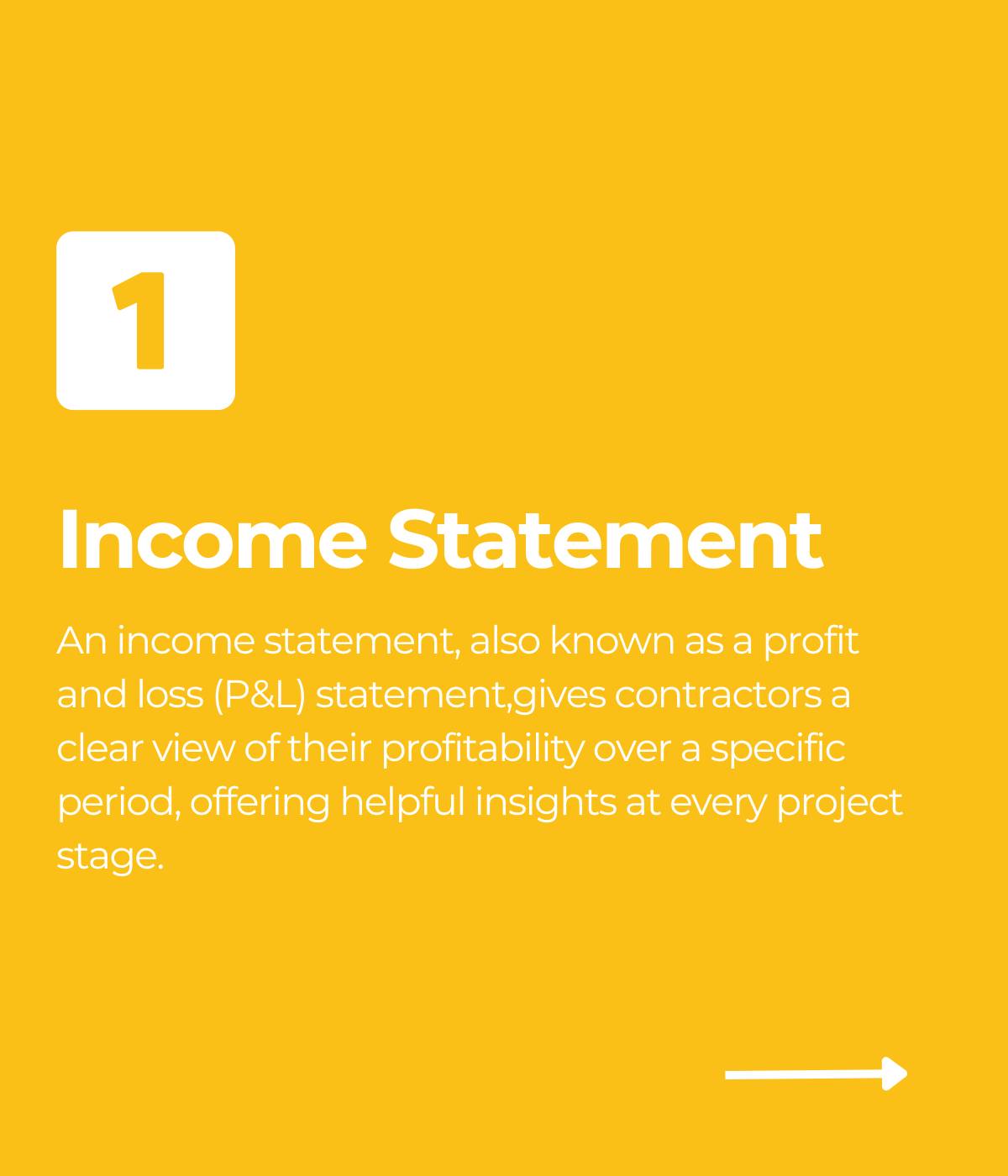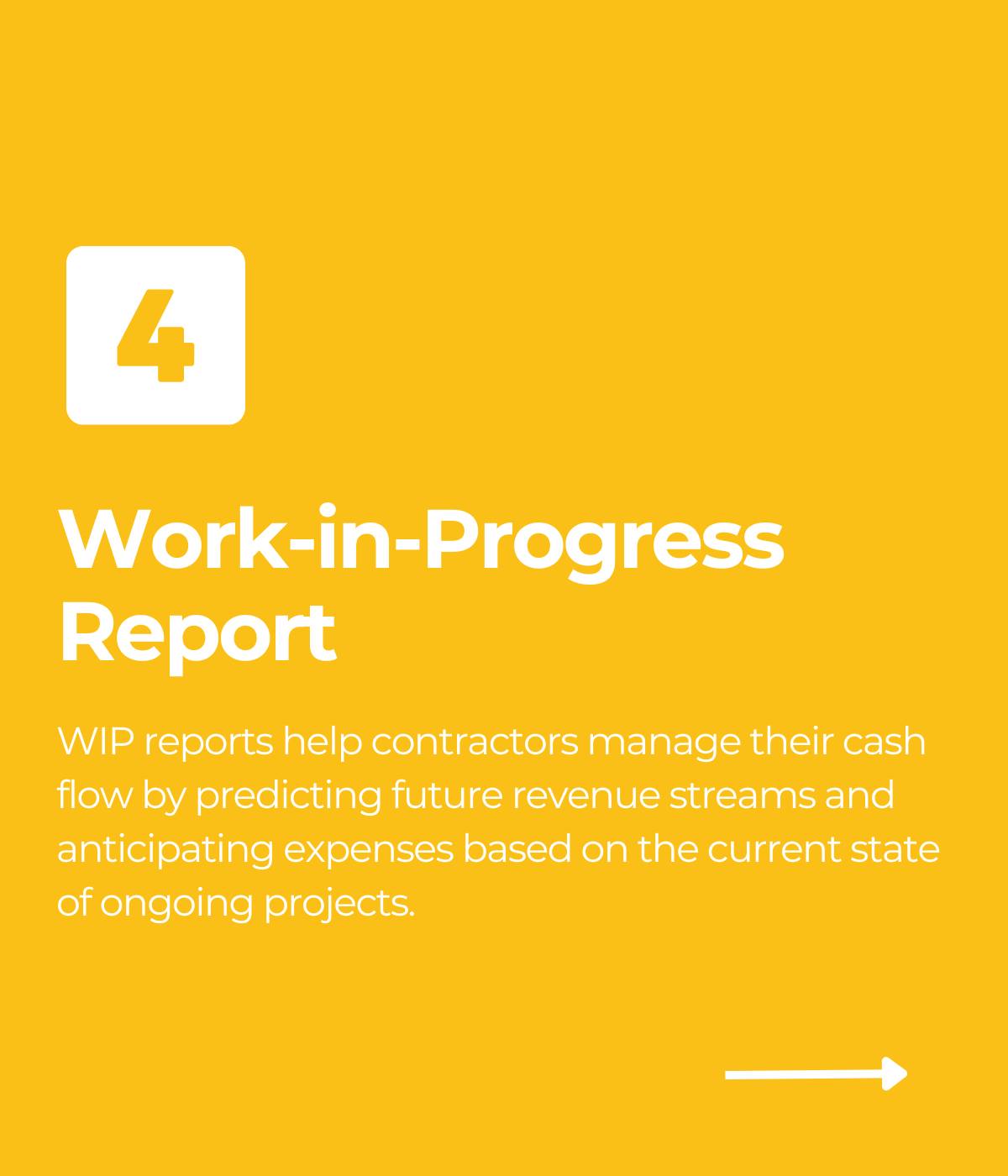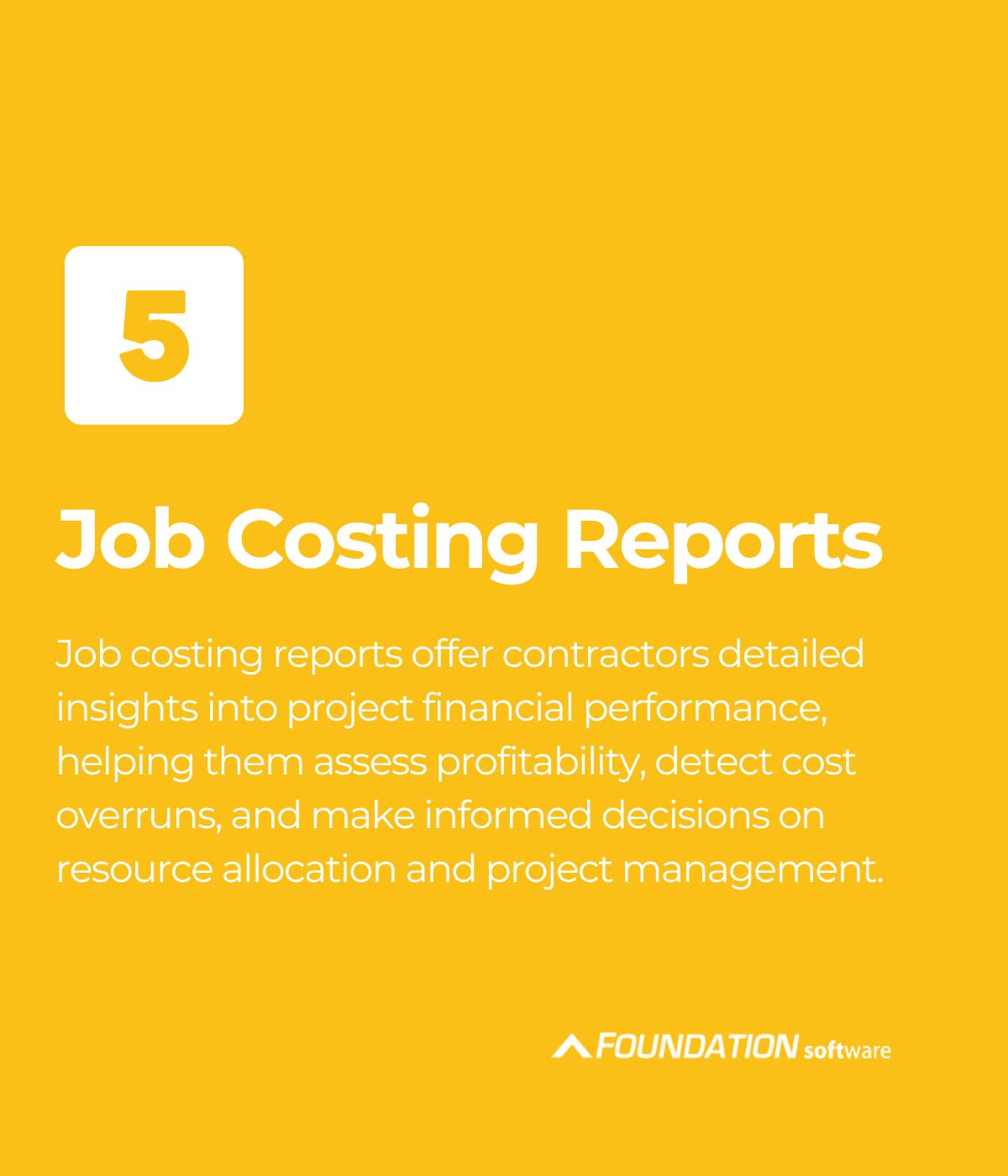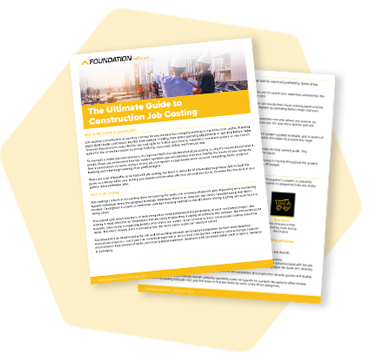
Construction accounting is a unique form of bookkeeping and financial management. It’s designed specially to help contractors track each job and how it affects the company as a whole. While it draws on all the same basic principles of traditional accounting, it also has several important and distinct features.
In this blog, we’ll dive into what makes construction accounting unique and the information contractors need to track to attain long-term success.
Key Takeaways
- Construction accounting involves unique processes because its based on each individual project. Every calculation varies based on a variety of factors like project timelines, equipment needed, workforce, etc.
- Contractors should rely on job costing to accurately calculate their financial performance on a per-job basis.
- Construction accountants should have a plan for revenue recognition based on their project needs and in compliance with laws and regulations established by the IRS.
- Tracking and planning for retainage is crucial for a construction business’ long-term success because it helps them understand outstanding totals they may still be owed and what project milestones they still need to hit.
- Construction payroll requirements, such as certified payroll and union reporting, can be time-consuming and challenging so contractors should have a plan in place to address them — like a construction payroll service.
- Recently, many contractors have begin investing in construction accounting software — like FOUNDATION® — to address construction-specific accounting challenges.
Why Is Construction Accounting Different?
In comparison to other industries, like retail or manufacturing, construction contracting has several distinct traits from an accounting perspective.
| CHARACTERISTICS OF CONSTRUCTION ACCOUNTING: |
|---|
| 1. It’s based on each project. |
| 2. Production is decentralized. |
| 3. Contracts are long-term with extended payments. |

1. Project-Based
Contractors operate their business primarily around projects. The financial focus revolves around each job.
Think of any other business, such as a chain of designer cupcake shops or a pneumatic valve manufacturer. There, managers might treat each store, plant, product line or the entire business as a “profit center.” For most industries, these are stable and predictable.
Construction contractors, however, need to treat each construction project as a unique, short-term profit center because each construction project tends to have unique inputs and requirements.
Even when projects have similar production requirements, they’re often subject to different site conditions or local variables like:
- Labor availability
- Cost of materials
- Legislation
In the end, construction companies that want to precisely control costs and bid intelligently must accurately track costs for each project individually, as well as the types of construction expenses and production activities that make up job costs. These numerous temporary cost centers are ultimately why contractors need to practice accurate job costing.
2. Decentralized Production
Similarly, in contrast to retail and manufacturing, production primarily happens across different jobsites rather than fixed locations like plants. Both equipment and labor then frequently move from site to site, leading to mobilization costs.
It also means that equipment costs and labor costs always have to be tracked to each job site with the correct wage rate, and wage rates differ based on the areas prevailing wage and collective bargaining agreements (CBAs).
On top of distinct project requirements, construction operations also features long and often seasonal production cycles. Because production can be less predictable, contractors often aren’t able to retain large amounts of inventory.
As a result, the cost and availability of production inputs can fluctuate and require careful tracking and planning.
3. Long-Term Contracts
In construction, production contracts can last years and have multiple extended payments over that time. Contract terms commonly allow 30, 60 or even 90 days to pay invoices.
Retainage withholding or disputes can delay payment even longer. As a result, revenue recognition and cash management in construction both carry special considerations.
Contractors need precise tracking and reporting, as well as collection and cash-flow strategies to maintain long-term success.
The Foundation for Construction Accounting
Factoring for some of the essential differences from general accounting, construction accounting relies on several important concepts.
1. Job Costing
What Is Job Costing?
For most businesses, the accounting general ledger (G/L) is all they need. This lets them track transactions that impact the whole company’s financial picture. However, because construction accounting is project-centered and production is de-centralized, contractors also need a way to track and report transactions specific to each job. That’s job costing.
Job costing is the practice in construction accounting of tracking a cost category (like indirect costs and direct costs) to specific projects and production activities. Construction accounting systems must integrate both job costing and accounting general ledger functions seamlessly.
What Job Costing Does
In construction accounting, job costing and the G/L work together to give contractors a comprehensive view of their financial health. . The G/L looks across at the whole company, and job costing looks at the project level. And where the G/L is made up of accounts (like materials expenses or A/P), job costing is made up of:
- Individual projects
- Cost activities (like foundation or framing)
- Cost types (like labor or material costs)
| GENERAL LEDGER | JOB COSTING |
|---|---|
| Tracks company finances | Tracks project data |
| Produces financial statements, aging reports, over/under billing | Produces estimated vs. actual, production reports, WIP reports |
| Organized by chart of accounts | Organized by job cost structure |
When all that job data is recorded and organized, the result is actionable reporting that can be used to make informed decisions. A few examples include:
- Contractors can coach their project managers and superintendents on how to supervise ongoing costs and production successfully.
- Estimators can know the true break-even cost even in tight bids.
- PMs and supers have a “scorecard” to see how their crews are performing, learning and making adjustments.
With better estimating, bidding and cost control, contractors should be able to protect narrow profit margins and keep taking on the right projects that will improve the financial health of the company, leading to long-term growth.
How Job Costing Does It
Construction job costing can measure several different aspects of a project to improve estimates and budgeting. While financial reporting from the G/L just looks at dollar amounts, contractors can use job costing to track:
| physical completion | (in units) |
| costs faced | (in dollars) |
| labor used | (in hours) |
It tracks these not only to each job but also within each group of job activities and each type of cost. For example, a contractor might “code” an invoice to Job 140 (Lake Ave. Remodel), Cost Code 100 (Foundation), Cost Class “MAT” (Materials).
Some might also categorize costs by project phases or sub-jobs, like floors of a structure or buildings in a development. The system of categories the contractor uses across all their jobs is called the job cost structure.
By tagging every transaction with information from the job cost structure, contractors can get an accurate picture of their costs. They can look at how much each aspect of operations costs on a particular job and across the company as a whole.
Along with expenses, they can:
- Track progress according to specific budget items
- Detect patterns
- Report profitability or overruns for different production activities as they’re underway
- Identify costs shared between multiple jobs, like equipment, and calculate a fair way to distribute those costs, which is called overhead allocation
In the end, the goal is to help contractors identify their true costs and profitability, which is otherwise very difficult to do in an industry with so many variables from contract-to-contract.
2. Financial Reporting
Why Does Financial Reporting Matter?
Financial reporting gives contractors a more comprehensive view of their business’s financial health. A few examples include:
- Cash flow reports: Gives contractors visibility into exactly when funds are coming in and when they’re being directed elsewhere
- Work-in-progress reports: Help contractors predict future revenue streams and expenses to improve cash flow management
- Job cost reports: Provide in-depth analysis of financial performance on each project
By compiling these reports, contractors can analyze trends and make more informed decisions to maximize productivity and profitability.
3. Contract Revenue Recognition
What Is Revenue Recognition?
Revenue recognition or income recognition is how a contractor determines when they’ve officially made money on a project. Proper revenue recognition timing is crucial for accurate financial reporting.
Revenue recognition also helps determine when a contractor should officially record an expense. Remember, this comes into play because construction contracts are usually long-term and often have delayed payments. Contractors aren’t necessarily able to complete, bill and collect on a contract in the same month. In fact, for many contractors, this never happens.
That leaves contractors and construction accountants with a choice of revenue recognition method. The method they choose will determine when income and expenses “count.” In some cases, they might use one method for their own bookkeeping and one for tax reporting as long as they remain consistent over time.
In construction accounting, the main options have traditionally included:
- Cash-basis
- Completed contract
- Percentage of completion
However, contractors now must consider guidance from the ASC 606 revenue recognition standards with their construction CPA.
The Cash Method
The simplest method for recognizing revenue is the cash method. Contractors record revenue when and only when they receive payment — and report expenses when and only when they actually pay. Therefore, there are no accounts payable (A/P) or accounts receivable (A/R). Under cash accounting, if money hasn’t changed hands yet, there are no financial transactions to account for.
While cash-basis accounting has several advantages, it’s not for every construction business. In fact, while many U.S. small businesses prefer cash accounting for its simplicity and flexibility, only some contractors qualify.
According to the IRS, only construction businesses with less than a set average annual revenue can use the cash method for tax purposes. If a business’ sales exceed that amount, they’ll have to use another method for tax purposes. In that case, they may decide simply to use another method for their own books as well.
Each of these other methods will be known as an accrual method. An accrual method will recognize an expense when it’s incurred and revenue when it’s earned, even if cash hasn’t come in or out yet. In other words, it tracks how money “accrues,” or accumulates, in holding before it moves as cash.
Learn more about cash and accrual methods »
The Completed Contract Method
Under the completed contract method (CCM), contract income and expenses aren’t reported until the project finishes. Of course, that doesn’t mean there aren’t expenses during construction or that contractors can’t bill in the meantime.
It just means that any profit isn’t official until the end. Everything hits the income statement at one time. This sometimes means contractors are able to defer taxable revenue if the contract won’t be completed until the following tax year.
While CCM is an accrual method, it differs from other accrual approaches in when revenue is recognized.
CCM also has particular restrictions from the IRS. To be eligible, contractors can’t exceed a certain average annual revenue, and their contracts must be able to be completed within a set timeframe.
The Percentage of Completion Method
The percentage of completion method (PCM) allows a contractor to recognize revenue as they earn it over time. As a project progresses toward completion, the contractor can bill for the work they’ve performed, i.e. the completion percentage.
Each time they issue an invoice, they can record the earned revenue. This continues until they finish the contract. In order to calculate how much of the contract they’ve earned for a billing period, they might choose among a number of methods, including cost-to-cost and estimated percent complete.
Unlike cash accounting, accrual accounting methods like PCM better reflect the economic reality of long-term projects since accrual-based reporting matches revenues with related expenses.
Learn more about percentage of completion »
ASC 606 Revenue Recognition Standards
The Financial Accounting Standards Board, which oversees U.S. generally accepted accounting principles (GAAP), issued “ASC 606: Revenue from Contracts with Customers” as a new set of standards for recognizing revenue. GAAP provides best-practice accounting standards across all U.S. industries.
As of December 2018, all companies reporting under GAAP need to follow ASC 606. And while private companies don’t have a formal obligation to use GAAP, many choose to follow its best practices.
Among other areas of guidance, these standards help contractors identify whether they should recognize revenue on their books at a single point in time (as with CCM) or over time (as with PCM). With ASC 606, the question hangs on the idea of transferring control.
Control is transferred when the constructed asset becomes the customer’s to own. If it’s on the customer’s land, the foundation of a building might come under the customer’s control as soon as it’s poured, the frame as soon as it’s put up, etc.
With a total development project, transfer of control might not be until the contractor hands over the keys. But because it’s part of a contract obligation, the parties must settle ahead of time when control is transferred — at a point in time or over time — to account for income appropriately.
| POINT IN TIME | OVER TIME |
|---|---|
| Contractor has no right to payment until the end | Contractor has a right to payment at various stages |
| Contractor has legal title until transfer | Customer has legal title of the asset |
| Contractor has physical possession until transfer | Customer has physical possession of the asset |
| Contractor has use and benefits until transfer | Customer has ongoing use and benefits of the asset |
Of course, the ASC 606 rule provides many other important standards for contractors to follow. That includes:
- Identifying whether they need to count a project as one contract or multiple contracts
- How to determine the contract price
- How to allocate the sales
- Changes to accounting for contract losses, stored materials and cost-to-cost calculations
As with using cash accounting or methods like PCM and CCM, contractors need to consult with their construction CPA to make sure they’re on track and using the most accurate accounting method for their business.
These revenue recognition guidelines help ensure consistency in revenue recognition practices across different contractors.
Learn more about the new revenue recognition standards »
4. Contract Retainage
What Is Retainage?
Retainage is the predetermined amount of money an owner may hold back from payment until they’re satisfied with contract completion.
A common retention amount might be 5-10% of the contract value or invoiced amount, but it can be less or more.
The idea of retention is to provide the customer with some security against any deficiencies or defects on the project.
How Retainage Works
For most contractors, retainage is simple enough on paper, even though, by nature, it’s an exception to the rule.
In practice, when a contractor earns revenue under an accrual method like CCM or PCM, they have the right to issue an invoice and record the amount as an account receivable (A/R) until it’s collected.
That is, except for retainage.
According to revenue standards, the contractor doesn’t have a current, unconditional right to the retainage portion of an invoice.
Therefore, it’s not treated as a receivable (A/R) amount. Contractors record it instead in a separate asset account.
Once a contractor does have a right to it, after satisfactory contract completion, the contractor issues an invoice for it and moves it from the asset account to the A/R account for collection.
However, it looks on paper, retainage has a bigger impact in reality. Retainage laws vary from state to state, but in some cases, owners can withhold it for over a year.
Additionally, retention between 5-10% can actually take a 20-50% bite out of a contractor’s profit.* Given construction’s narrow profit margins, smart retainage management is at least as important as proper retainage tracking.
5. Specialized Construction Billing
Many industries operate around fixed-price, point-of-sale billing, but that’s not always the case with construction. Because construction production is project-based, decentralized and long-term, contractors may use a wide range of billing styles and methods. Often, specialized software is required to track and create those billings. Let’s look at just a few contract types and billing formats.
Fixed Price
Also known as a lump-sum contract, fixed price billing is based on a detailed estimate that gives a total cost for the entire project. It can also be considered in two types:
- Fixed-price hard bid
- Fixed-price negotiated
A hard bid essentially says, “No matter what, we’re building it for this amount of money.” As a result, the risk is heavily on the contractor rather than the owner.
If there are any overruns because of changed site conditions or input costs, it falls on the contractor.
A negotiated lump sum, on the other hand, might allow for some contingencies and unforeseen events. Billing a fixed-price contract often happens on a percentage-of-completion basis with retainage withheld.
Time & Material
Time-and-material billing bases the contract price on a per-hour labor rate plus the actual cost of materials used. For both the labor and materials components, the contractor may apply a standard markup.
This builds their profit percentage into the amount and accounts for overhead costs.
For example, an HVAC technician who’s paid $20 an hour might be billed at a fixed $50 per hour. Additionally, the equipment they install might follow a standard markup table by item or price, such as “2x” for a disposable air filter.
If the technician spent two hours on the dispatch and additionally replaced a $20 air filter, the contractor would bill the customer $100 for labor plus $40 for materials.
Unit Price
Under a unit-price contract, the contractor bills a customer at a fixed price-per-unit rate. Typically, this will be useful if they aren’t able to estimate the unit production for the project with a lot of certainty.
Unit-price billing is especially common among heavy-highway and utility construction companies.
With unit price, risk tends to be shared between the contractor and customer since production quantities can end up higher than estimated.
As long as they’ve estimated the unit pricing correctly, the contractor may increase their revenue in this case. Otherwise, if unit pricing is off, they stand to lose money.
AIA Progress Billing
One common construction billing format is known as AIA progress billing, named after the American Institute of Architects, which produces its official forms.
As a type of progress billing, AIA billing invoices the customer based on the percentage of work completed for that billing period.
This invoice generally consists of a signed summary sheet, followed by a schedule of values that details what’s been completed and billed to date.
Together, these documents are considered an “application” for payment because the recipient will have a chance to review the schedule of values and either accept or dispute the billed amount.
If they disagree, they’ll send back “redlines” so that the contractor can revise and resubmit the AIA billing application.
Learn more about AIA billing »
6. Construction Payroll
Finally, with multiple profit centers and decentralized production, plus rigorous compliance requirements, construction also sees some of the more unique and complex payrolls. This is most true where there’s:
- Prevailing wage requirements and certified payroll reporting
- Multiple pay rates, multiple states and multiple localities
- Other compliance reporting
Construction payroll systems must be able to handle these complex payroll scenarios, and many contractors use specialized payroll software to manage their payroll needs.
Certified Payroll & Prevailing Wage
Construction firms who work on public projects commonly have to navigate prevailing wage payroll, often called “Davis-Bacon payroll” after the landmark Davis-Bacon Act.
Prevailing wage legislation requires contractors to pay the rate of compensation that’s standard, or “prevails,” for each worker classification on similar jobs in the area.
Contractors must then certify their compliance on each project using certified payroll reports that may vary between different states or agencies.
In some sense, prevailing wage payroll is like a minimum wage but more complex.
First, prevailing wage payroll may include and sometimes requires non-cash compensation called “fringe benefits,” such as health care or continuing education.
Second, the prevailing wage rate will vary not just by area but also specific worker classification. Each jurisdiction may have particular determinations for what job functions qualify under which classification — and which level within that class.
So, a single employee might have multiple prevailing wage rates and fringe requirements on a single job, depending on what they’re doing each hour. These rates can also change every six months to a year.
Contractors must carefully track both base wage rates and total wage packages.
Learn more about Davis-Bacon payroll »
Union Payroll & Reporting
Union contractors face a similar situation as prevailing-wage contractors. Where certified payroll typically tracks wage and fringe obligations for government agencies, union payroll needs to track and report wage and fringe obligations to the union local.
This becomes even more complicated with multi-union payroll. For example, a crew might have a home union but work on a project within another union local’s jurisdiction.
In that case, the home local might have a claim on health care contributions and pension deductions, while the job local wants dues and political action contributions.
Each appropriate fringe and deduction would need to be split out to the right local and reported appropriately
Reporting requirements for a particular union may exist on a national or a local level. Contractors can typically determine their requirements, especially when entering another jurisdiction, by checking with their local union business manager.
Multiple Rates, States & Localities
Apart from multiple prevailing wage and union rates, contractors commonly deal with multiple rates for numerous other reasons. Working on jobsites in multiple cities and states, employees may have multiple tax withholdings, all within a single payroll.
As a result, contractors in multiple jurisdictions have to watch out for double taxation. Managing different wage scales across jurisdictions requires careful attention to wage and hour laws.
Chiefly, this can be a problem where an employee resides in one state and works in another. When states have a reciprocity relationship, however, the worker’s state of residence may issue credit for taxes paid on income earned out of state.
That way, they don’t pay twice, but this requires careful attention to timecards and pay stubs.
Construction companies also have to watch that they don’t overpay on unemployment tax when an employee works in multiple states.
Unemployment is often owed only to one state per employee. And if it’s mistakenly paid to each state they worked in, contractors shouldn’t expect to be contacted for a refund.
Because it’s not always clear where unemployment should be paid, the Department of Labor suggests considering four factors in sequence:
| 1. Are the services localized? |
| 2. Does the employee have a base of operations? |
| 3. Is there a place or direction or control? |
| 4. What’s the employee’s state of residence? |
Learn more about multi-state payroll »
Compliance Reporting
Finally, contractors can face numerous payroll reporting requirements, even if they don’t have to file certified payroll or union reports. These can include:
- Workers’ compensation
- New hire reporting
- Equal employment opportunity (EEO) minority compliance
Contractors need to have a keen awareness of these requirements for each jurisdiction they bid and work in, from the federal down to the local level.
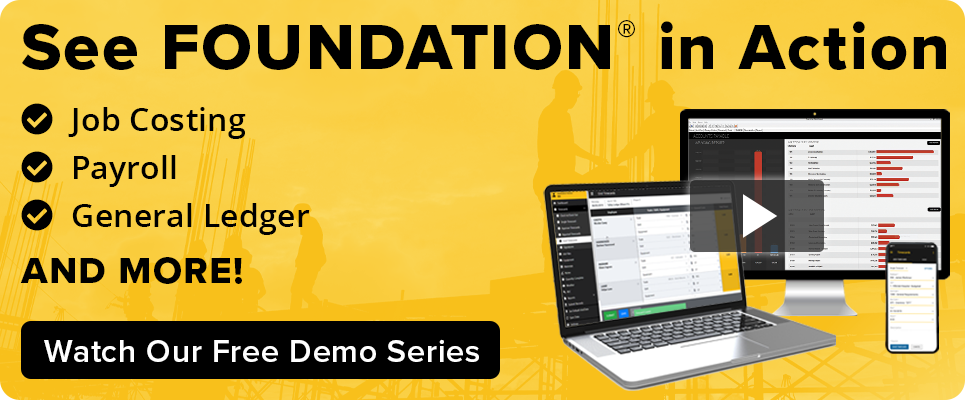
Unlock Construction Accounting Success For Your Business
Construction accounting methods have a steep learning curve, but you can climb it and put your company in a better financial position.
In addition to the fundamentals of general accounting, like debits, credits, overhead expenses, and financial statements, contractors have many additional aspects of construction accounting to consider.
Job costing helps construction business owners stay on top of the numerous variables of running a project-centered, decentralized business and gives you insight into the company’s financial performance.
Revenue recognition and retainage practices track with long-term contracts paid over time. Plus, construction payroll gives them more than enough to stay busy.
The most important thing for contractors, whether experienced in the industry or just starting out, is to have help. A few common means of help include:
- A construction-specific CPA is an absolutely essential business partner.
- A construction payroll service that can handle multiple states, unions, and certified payrolls can save a tremendous amount of time.
- Integrated job cost accounting software — like FOUNDATION — is incredibly important for contractors who outgrow small business software and need more robust financial reports.
For more information about FOUNDATION, speak with an expert today!
Share Article
Keep on current news in the construction industry. Subscribe to free eNews!
Our Top 3 YouTube Videos
Learn about our software more in depth with product overviews, demos, and much more!
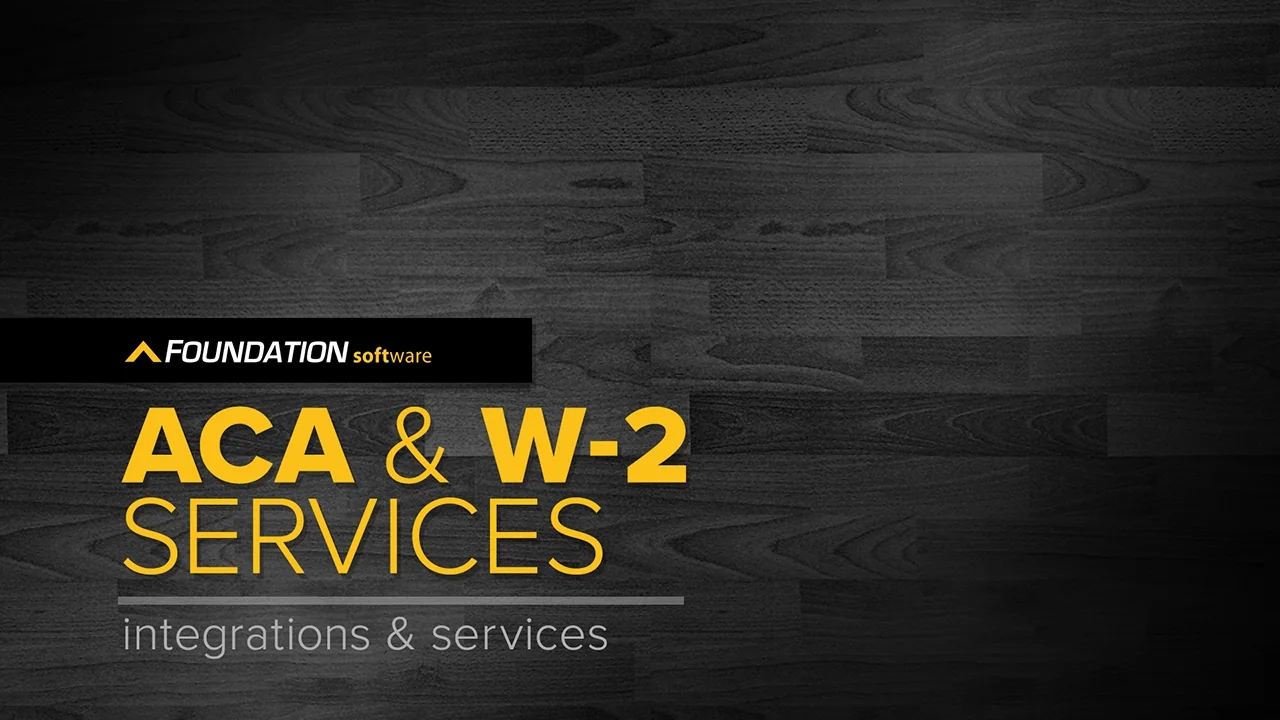
Our ACA reporting & e-filing services include official 1094-C and 1095-C IRS reporting, optional e-filing (no applying for a TCC code required), mailing to your employees and experienced support to help you.

There are plenty of reasons to make FOUNDATION your choice for job cost accounting and construction management software — just ask our clients!

From job cost accounting software, to construction-specific payroll. Get an overview on your next all-in-one back-office solution.



